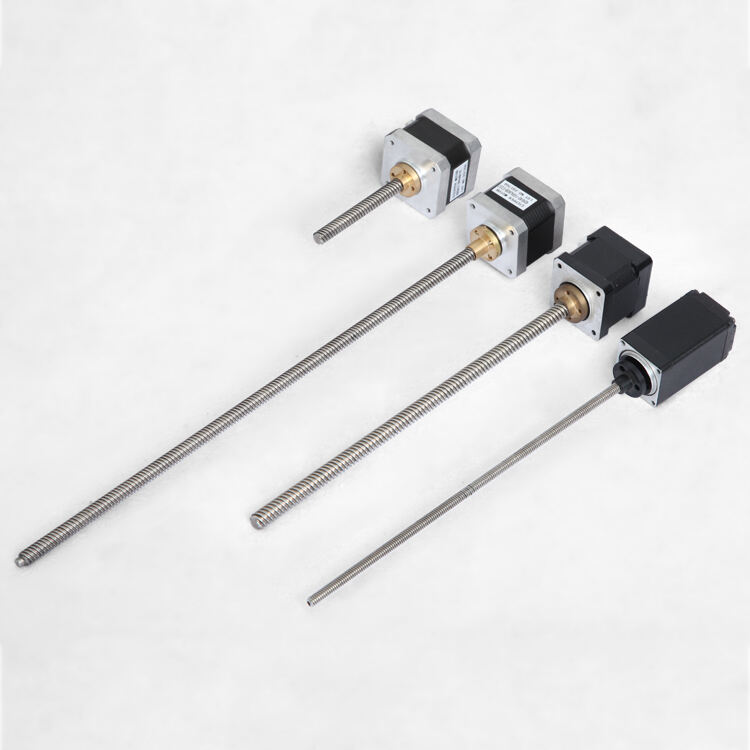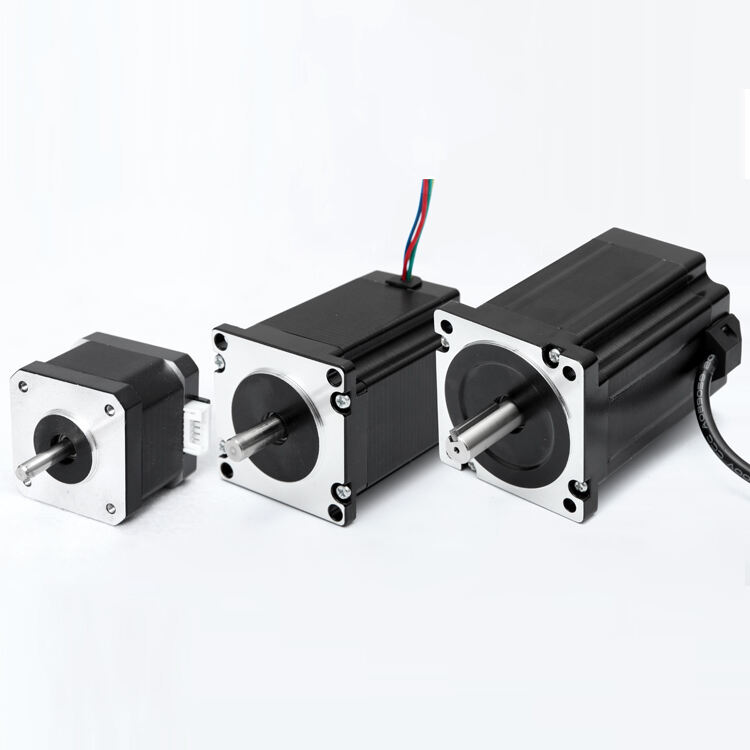Understanding Voltage Ripple Impact on 3D Printer Performance
The success of any 3D printing project heavily depends on the precision and reliability of the printer's motion control system. At the heart of this system lies the stepper motor driver, which must deliver clean and consistent power to ensure smooth operation. Voltage ripple, though often overlooked, plays a crucial role in determining the quality of motion control and ultimately, the printed output. When selecting a stepper driver for your 3D printer, understanding and monitoring voltage ripple becomes essential for achieving optimal performance and preventing potential issues that could compromise print quality.
Modern 3D printers rely on precise movements controlled by stepper motors, which receive their commands through stepper drivers. These drivers convert the digital signals from the printer's controller into the appropriate voltage patterns needed to move the motors accurately. However, if the voltage supply to these drivers contains significant ripple, it can lead to inconsistent motor performance, resulting in visible artifacts in your printed objects.
Core Components of Stepper Driver Operation
Power Supply and Voltage Regulation
The foundation of reliable stepper driver operation begins with proper power supply and voltage regulation. A stepper driver requires a stable DC voltage source to function effectively. The power supply must be capable of delivering consistent voltage levels while handling the current demands of the stepper motors. When voltage ripple enters the equation, it introduces variations in the power delivery that can affect the driver's ability to maintain precise control over the motor.
Quality power supplies incorporate filtering capacitors and regulatory circuits to minimize voltage ripple. However, the effectiveness of these components can vary significantly between different models and manufacturers. Understanding the relationship between power supply quality and voltage ripple helps in making informed decisions when selecting components for your 3D printer setup.
Current Control Mechanisms
Modern stepper drivers employ sophisticated current control mechanisms to regulate motor performance. These systems continuously adjust the current flowing through the motor windings to maintain precise positioning and smooth motion. Voltage ripple can interfere with these control mechanisms, causing variations in current delivery that manifest as mechanical inconsistencies in the printer's movement.
The current control circuitry must work harder to compensate for voltage ripple, potentially leading to increased heat generation and reduced efficiency. In extreme cases, excessive voltage ripple can overwhelm the driver's ability to maintain accurate current control, resulting in missed steps or position errors.

Impact of Voltage Ripple on Print Quality
Surface Finish and Layer Consistency
Voltage ripple in stepper drivers can have a direct impact on the surface quality of 3D printed objects. When the voltage supply fluctuates, it can cause subtle variations in motor movement, leading to visible artifacts on the printed surface. These imperfections often appear as regular patterns or waves, particularly on straight walls or flat surfaces where any inconsistency becomes readily apparent.
Layer consistency, a critical aspect of 3D printing, can also suffer from voltage ripple effects. As the printer builds each layer, precise Z-axis movement is essential for maintaining uniform layer height. Voltage ripple can introduce minor variations in this movement, resulting in layers that are slightly thicker or thinner than intended, affecting both the aesthetic and structural properties of the printed object.
Dimensional Accuracy and Positioning
Accurate positioning is fundamental to successful 3D printing, and voltage ripple can compromise this precision. When stepper drivers receive inconsistent power due to voltage ripple, they may struggle to maintain exact positioning, especially during rapid direction changes or complex movements. This can lead to dimensional inaccuracies in the printed parts, potentially affecting their functionality or fit in assemblies.
The effects of voltage ripple on positioning accuracy become more pronounced in high-precision applications or when printing small features that require exact placement. Even minor deviations can accumulate over time, resulting in noticeable discrepancies between the intended design and the final printed object.
Measuring and Monitoring Voltage Ripple
Test Equipment and Methods
Proper measurement of voltage ripple requires appropriate test equipment and methodology. An oscilloscope is the most effective tool for observing and quantifying voltage ripple in stepper driver systems. When taking measurements, it's important to consider factors such as probe placement, ground connection quality, and measurement bandwidth to ensure accurate results.
Digital multimeters, while useful for many electrical measurements, may not provide complete information about voltage ripple due to their limited bandwidth and inability to display rapid voltage variations. Specialized power supply analyzers can offer additional insights into power quality and ripple characteristics.
Interpretation of Results
Understanding how to interpret voltage ripple measurements is crucial for making informed decisions about stepper driver selection. The peak-to-peak ripple voltage, expressed as a percentage of the nominal supply voltage, provides a key metric for evaluating power supply and driver performance. Industry standards often recommend keeping ripple below certain thresholds to ensure reliable operation.
Analysis should also consider the frequency components of the ripple, as different frequencies can affect motor performance in various ways. High-frequency ripple may be filtered more effectively by the driver's internal components, while low-frequency ripple could have a more direct impact on motor behavior.
Selecting the Right Stepper Driver
Key Specifications and Features
When choosing a stepper driver for your 3D printer, several specifications related to voltage ripple handling capability should be considered. These include the driver's input voltage range, ripple rejection ratio, and current regulation performance. Higher-quality drivers often incorporate better filtering and more robust current control circuits that can maintain stable operation even in the presence of some voltage ripple.
Additional features such as active power filtering, advanced current control algorithms, and thermal management capabilities can contribute to better handling of voltage ripple effects. Understanding these specifications helps in selecting a driver that will perform reliably in your specific application.
Implementation Best Practices
Proper implementation of the stepper driver system involves more than just selecting the right components. Careful attention to power supply selection, wiring practices, and system grounding can help minimize voltage ripple at the source. Using appropriate cable routing and shielding techniques can reduce the impact of external noise sources that might contribute to voltage ripple.
Regular maintenance and monitoring of the power delivery system can help identify potential issues before they affect print quality. This includes periodic inspection of power supply performance and verification of voltage ripple levels under various operating conditions.
Frequently Asked Questions
How does voltage ripple affect stepper motor torque?
Voltage ripple can cause variations in the current delivered to the stepper motor windings, potentially leading to fluctuations in motor torque. This can result in inconsistent force application during printing movements, affecting the smoothness and accuracy of the print. In severe cases, it may cause the motor to lose steps or fail to maintain position under load.
What is an acceptable voltage ripple percentage for 3D printer applications?
For most 3D printer applications, keeping voltage ripple below 5% of the nominal supply voltage is recommended. However, high-precision applications may require even lower ripple levels, typically below 2%. The specific requirements can vary depending on the stepper driver specifications and the desired print quality level.
Can voltage ripple cause long-term damage to stepper drivers?
Excessive voltage ripple can cause increased stress on the stepper driver's components, potentially leading to premature failure. The additional heat generated from compensating for voltage fluctuations can reduce the driver's lifespan. Regular monitoring and maintaining ripple within acceptable limits helps ensure long-term reliability of the system.

